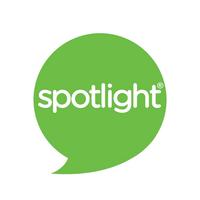(Spotlight4796)Baby Sign Language 10 October, 2011
Voice 1
Welcome to Spotlight. I'm Joshua Leo. Voice 2
And I'm Liz Waid. Spotlight uses a special English method of broadcasting. It is easier for people to understand, no matter where in the world they live.
Voice 1
Sounds of a baby crying
Have you ever heard this sound? Sometimes this sound can be very frustrating. You may wonder what a baby wants when he cries. You become tired or angry that you do not know. You may wish that you could communicate with a crying baby.
Voice 2
Many people believe that babies are too young to communicate. People may believe that babies can only cry when they need something. Then it is the job of the parent or caregiver to try and discover what the baby wants.
Voice 1
But experts say it is possible for babies to communicate their needs in ways other than crying. Babies can learn a very special language. This language does not use speech. Instead, it uses particular hand signs. This baby sign language is easy for young babies to learn and copy.
Voice 2
Today's Spotlight is on baby sign language. Using this special form of communication can help parents and caregivers of children.
Voice 1
It takes an average baby about a year before she can start using words to communicate. Even then, she usually can only say one or two words at a time. And she is often difficult to understand! So, it is true that young babies cannot communicate their needs verbally, that is, by talking. They simply lack the skills to form words with their mouths. They are not able to make the right sounds to speak their needs.
Voice 2
We already know that babies can communicate in some very simple physical ways. They do this by using their hands, eyes, feet, and yes, their cries to communicate. Babies learn that when they cry they usually get an answer. So, many times, a baby will cry when she needs to be fed. A baby will cry if she is wet or dirty. And, a baby will cry if she needs to be held. She knows no other way to communicate. When babies cry, adults feed them, clean them, and hold them.
Voice 1
But, there is another way for babies to communicate their needs. That is through baby sign language! Baby sign language can save a lot of tears, crying, and screaming - for babies and parents. Baby sign language uses the hands to communicate. At about six months old, babies are still not able to speak words. The muscles needed to speak are not yet developed. But, the muscles in their hands have developed much more quickly. So babies can then begin to use their hands to communicate.
Voice 2
Babies learn almost everything through observing. They especially observe the adults around them. They learn by copying what they see. Adults can teach babies special signs using their hands. The hand signs represent words. Adults can use hand signs for words that are important to babies. These words include, eat, drink, more, change, and sleep. The more that adults repeat or practice these hand signs, the quicker their baby will begin to understand. It may take a short time for the baby to learn to use his hands in the correct way. But soon, the baby will be able to communicate his needs, without crying. Instead he can use a special sign.
Voice 1
Not all adults use the same hand signs to represent words. Some adults create their own signs. And some babies even create their own signs that adults must learn! But many adults look in special books for guidance. There are many resources like books and websites to learn baby sign language. Many of the signs are for words that are important to babies. Here is one example.
Voice 2
Eating is important to babies. There is a special sign for the word "eat." To make the sign, put your thumb and the tops of your four fingers together. Move the fingers towards your mouth, like you are going to put food in your mouth. This is the sign for "eat." Voice 1
It is easy to teach a baby the sign for "eat." When talking to a baby, simply make the "eat" sign every time you say the word "eat." For example, you may ask your baby, "Are you hungry? Are you ready to EAT?" When you say the word "eat" remember to make the sign. The more you repeat the special sign, the easier it is for your baby to learn to copy it. Soon, when your baby is hungry, he will make the "eat" sign with his hands. Voice 2
Adults must learn to watch carefully for the special hand signs. When they see a hand sign they should try to reward their baby. That is, they should give the baby what he asked for. If a baby uses the sign for "eat," then the adult should feed him. If the baby uses the sign for "drink" then the adult should let him drink. The sign for "change wet clothes" should be rewarded with a clean, dry diaper. And, if a baby signs "sleep" then the adult should let the baby rest. Giving the baby a rest gives adults a rest too!
Voice 1
Here are a few more ideas to remember when teaching a baby sign language.
Voice 2
First, always give the sign when you say the word. If you SAY "eat" then SIGN "eat" too. Voice 1
Second, be patient. It can take a few months for a baby to use hand signs.
Voice 2
Third, share your special signs with family members or other caregivers. They can use signs with your baby too.
Voice 1
Fourth, start simple. Do not make signs very complex. Make signs only for words that are important to your baby's life, like "eat," "more," "finished," and "milk!" Voice 2
Finally, always praise your baby when he tries to use a sign. It will encourage him to try again!
Voice 1
Research shows that baby sign language is very good for a baby. Sign language encourages babies to communicate earlier. They become active communicators. That is, they can begin communication with another person. Babies who know sign language can also communicate their needs easier. They feel understood. This makes them happier.
Voice 2
Babies are a special gift. It is a wonderful miracle when any baby is born. And each baby needs to receive lots of love and care. Learning the best way to communicate with a baby is just one way to show love.
Voice 1
The writer of today's program was Rebekah Schipper. The producer was Liz Waid. The voices you heard were from the United States. Computer users can hear our programs, read our scripts, and see our word list on our website athttp://www.radio.english.net. This program is called 'Baby Sign Language'. Voice 2
Tell us your opinions about baby sign language. Have you used this method? Email us your comments and questions. Our email address is radio @ english . net. you can also find us on Facebook. Just search for "Spotlight Radio." We hope you can join us again for the next Spotlight program. Goodbye!

